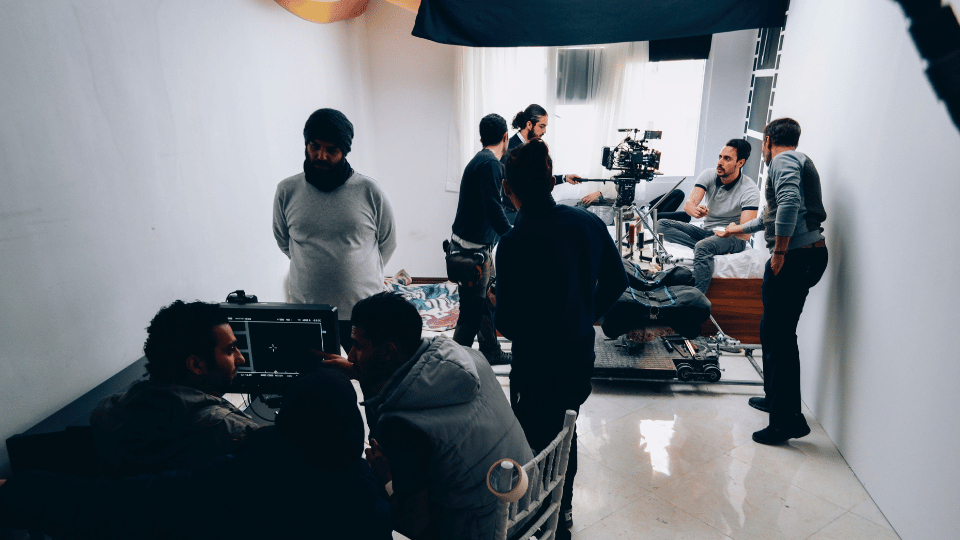Working on a film set is a dream job for many individuals passionate about the film industry. The behind-the-scenes magic that brings movies and TV shows to life is made possible by a diverse team of professionals with various on-set film jobs. These roles are essential to the production process, each contributing unique skills and expertise to create captivating visual storytelling.
Director
The director is the creative visionary behind the film, responsible for overseeing the entire production process. They work closely with the cast and crew to bring the script to life, making artistic decisions on framing, pacing, and performances. Directors have a profound impact on the overall look and feel of the film.
Producer
Producers play a crucial role in the financial and logistical aspects of film production. They secure funding, hire key personnel, manage budgets, and ensure the project stays on schedule. Producers work closely with directors to bring their vision to fruition while handling the business side of filmmaking.
Cinematographer
Also known as the Director of Photography (DP), the cinematographer is responsible for the visual aspects of the film. They work closely with the director to create the desired look and feel of each scene, making decisions on lighting, camera angles, and shot composition. Cinematographers use their technical skills to capture the essence of the story visually.
Production Designer
The production designer is in charge of the overall visual concept of the film, including sets, costumes, props, and locations. They work closely with the director and cinematographer to create the desired aesthetic and atmosphere for each scene. Production designers bring the world of the film to life through their creative vision and attention to detail.
Costume Designer
Costume designers are responsible for creating and selecting costumes for the characters in the film. They work closely with the director and production designer to ensure that the costumes reflect the characters’ personalities, time period, and setting. Costume designers play a crucial role in bringing authenticity and visual appeal to the screen.
Sound Mixer
Sound mixers are responsible for capturing high-quality audio on set. They use microphones and recording equipment to capture dialogue, ambient sounds, and other audio elements essential for the film. Sound mixers work closely with the director and editor to ensure that the audio enhances the storytelling experience.
Script Supervisor
The script supervisor plays a vital role in maintaining continuity throughout the film. They keep track of each scene’s details, including dialogue, props, and actor movements. Script supervisors work closely with the director and editor to ensure that the final cut of the film is seamless and consistent.
Gaffer
The gaffer is the head of the electrical department on set, responsible for lighting design and implementation. They work closely with the cinematographer to create the desired lighting effects for each scene. Gaffers use a variety of lighting equipment to achieve the director’s vision while ensuring a safe working environment for the crew.
Stunt Coordinator
Stunt coordinators are in charge of planning and executing action sequences and stunts safely on set. They work closely with the director and actors to choreograph dynamic and thrilling sequences that enhance the film’s entertainment value. Stunt coordinators prioritize safety while delivering exciting and realistic action on screen.
Assistant Director (AD)
Assistant directors play a crucial role in ensuring that the production runs smoothly and stays on schedule. They coordinate logistics, manage the cast and crew, and assist the director in various aspects of the filmmaking process. Assistant directors are essential in maintaining order and efficiency on set.
Conclusion
Working on-set film jobs offers a unique opportunity to be part of the creative process behind the scenes of the entertainment industry. Each role contributes to the collaborative effort of bringing stories to life on screen, making a significant impact on the final product that audiences enjoy. Whether you aspire to be a director, cinematographer, producer, or any other on-set professional, pursuing a film career can be a rewarding and fulfilling journey.
Key Takeaways:
- On-set film production relies on a diverse team, each contributing essential creative and technical skills.
- Directors guide the artistic vision and collaborate closely with cast and crew.
- Producers manage the financial, logistical, and organizational aspects of production.
- Cinematographers shape the film’s visual style through lighting, framing, and camera work.
- Production and costume designers create the film’s visual world through sets, props, and wardrobe.
- Sound mixers capture clean, high-quality audio that supports storytelling.
- Script supervisors ensure continuity, helping maintain consistency across scenes.
- Gaffers execute lighting plans to support the cinematographer’s vision.
- Stunt coordinators design safe and realistic action sequences.
- Assistant directors coordinate daily operations to keep production efficient and on schedule.
To enhance your skills and knowledge further, consider exploring the NYU Film and TV Industry Essentials online course and certificate program offered by Yellowbrick.








